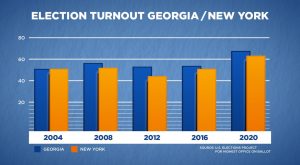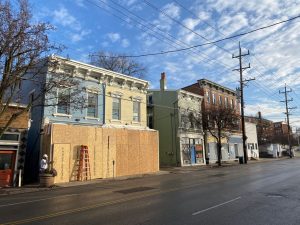In testimony on Capitol Hill Wednesday, the Federal Aviation Administration’s top official vowed the U.S. air travel system is safe despite recent near-miss incidents, and he said new protocols since a January ground stop of thousands of flights will prevent a repeat disruption.
“Our system is very safe,” acting FAA administrator Billy Nolen said. “At the same time, we don’t take that safety for granted. And we recognize we have to continue this journey of modernization.”
That modernization includes a continued upgrade of the notification system that provides updates to crews about airport infrastructure, flying conditions or other key safety alerts, which faltered on Jan. 10.
The failure of that system, known as the NOTAM, or Notice to Air Missions, led Nolen to call for a near-two hour halt on flights the morning of Jan. 11, the first since 9/11. That contributed to more than 1,300 cancellations and 11,000 delays.
Nolen on Wednesday also elaborated on the creation of a new safety review team following a handful of close calls in the air and on runways in recent weeks.
In late January, a United Airlines Boeing suddenly lost altitude after takeoff, coming close to the Pacific Ocean. In Austin, Texas this month, a FedEx and Southwest planes took off from the same runway, possibly close to colliding. A similar incident happened mid-January at New York’s John F. Kennedy airport.
The National Transportation Safety Board is investigating those near-misses.
The new FAA review team will examine “structure, culture, processes, systems and integration of safety effort,” around U.S. air systems, Nolen said.
He also noted that the United States has not had a fatal air accident in fourteen years and among nearly 230 million flights.
“But we all know that complacency has no place in air transportation, whether it’s on the flight deck, in the control tower, the ramp or the dispatch center,” Nolen added.
In the case of the possible near-collision in Austin, Nolen – a pilot for four decades and an accident investigator – answered inquiries from Texas Republican Sen. Ted Cruz, ensuring him that the “system worked as designed,” since the pilots saw the other plane on a “zero-visibility” day.
“Let me just underscore the urgency of preventing that sort of incident,” Cruz said.
With regard to the NOTAM-related groundstop in January, the FAA concluded that someone accidentally deleted files while working to sync the database and its backup.
Since then, the FAA has instituted a one-hour synchronization delay and will require two people to work on it at all times, instead of one.
The system is thirty years old, Nolen noted, and about 20% of users still rely on it, while most have upgraded to a new version.
“Where we are today? Call it halfway there,” he said, listing desired improvements like making NOTAMs more timely and relevant to pilots, allowing them to prioritize their route.
Nolen expects everyone to be on the upgraded version of the NOTAM system by fiscal year 2025.




